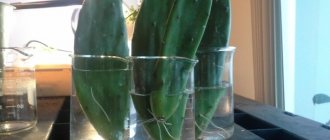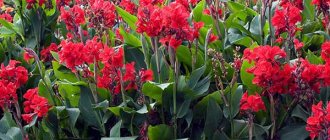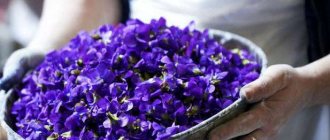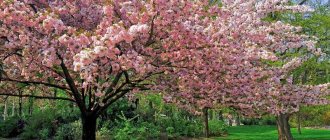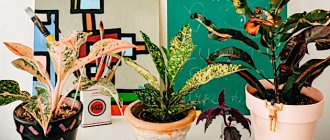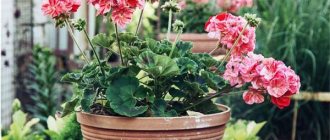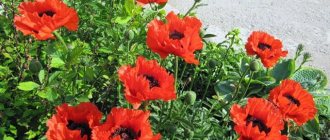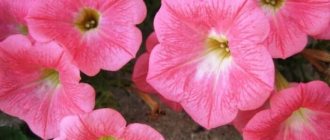Right choice
Fruit-bearing plants require plenty of sunlight, preferably at least 8 hours a day. Place them in the brightest spot in the house, either on a sunny deck or porch, or next to a large, unshaded, south-facing window.
Gardeners who want to grow fruit-bearing trees from seed should remember that seedlings take longer to begin bearing fruit than grafted trees and tend to produce poor fruit. For best results, it is recommended to purchase two to three year old grafted dwarf varieties. Indoor fruit plant species usually ripen faster from cuttings than from seeds.
Lychee
The evergreen lychee shrub is also called Chinese plum. The fruits are consumed fresh or canned, as a dessert, served with ice cream or wine.
This moisture-loving tropical plant is surprisingly easy to grow at home. The seed is first kept in a damp cloth, then, after germination, in a special substrate. The seedling should be placed on a well-lit windowsill, but not in direct sunlight.
It needs warmth and regular watering, as well as spraying 2 times a day with warm water.
Lychee grows slowly, so it does not require pruning often.
Malpighia
Malpighia, also known as Barbados cherries, contain 30 times more vitamin C than citrus fruits in their red berries. Its tolerance to dry air makes it one of the most convenient fruit trees to grow indoors, producing pink, swirl-like flowers in spring and cherry blossoms in summer. Place the tree outdoors on a sunny deck or balcony during the warmest months for a good harvest that ripens at temperatures above 25℃.
Camellia
A typical representative of the tea family, camellia stubborna, will decorate the interior of an apartment with its lush, lush blooms. Under suitable conditions it blooms profusely. Over time, an enlarged crown forms. The Japanese beauty is capricious in its care. The room temperature should be maintained no higher than 15 degrees. For growth and flowering, air humidity and constant watering with fresh water are required. The reward will be abundant flowering. In spring, camellia is covered with large inflorescences consisting of white, pink and purple petals.
Avocado
While glossy-leaved avocados have long been popular houseplants, it has been determined that trees grown from seed are not actually suitable for producing fruit! They very rarely bear fruit, and if this happens, the quality of the harvest leaves much to be desired. If you want to get avocados at home, it is best to choose self-pollinating varieties. Be sure to keep the tree in well-drained soil, as avocados often have root problems.
Ficus
There are more than 20 species of domestic trees of the ficus genus. They vary in shape and appearance. An unpretentious plant does not require frequent watering and feeding. It cleans the air well, neutralizing benzene formaldehyde and other harmful substances. Some ficus trees are poisonous. They should not be kept in a home with children or pets.
The jujube ficus produces volatile substances that are harmful to asthmatics. It is not recommended to place it in the bedroom and children's room.
Ficuses with large, juicy greens that form a dense crown look beautiful inside. The following varieties of ficus are optimal for the interior of the house:
- Ficus Benjamin;
- chewing;
- lyre;
- ficus Binnendieck;
- abundant;
- Bengal;
- dwarf;
- bottle.
Ficus is one of the most common indoor plants. Often found in apartments and offices. To make the flower look healthy, it is enough to water it abundantly from time to time.
Calamondin
For gardeners who don't have a greenhouse, this orange tree remains the easiest and most popular to grow indoors. It bears fragrant white flowers and small, lime-sized, tart orange fruits almost all year round. Calamondin (citrofortunella) is a cross between a kumquat and a tangerine. If you want something unusual, choose a variegated calamondin variety such as Variegata. Keep in mind that Citrofortunella prefers cool conditions - 18-19 ℃ during the day and 12-14 ℃ degrees at night and in winter.
Hibiscus
The Chinese rose will fit perfectly into the interior of an apartment or office. With proper care it grows up to 1.5-2 m in height. Chinese hibiscus is a long-lived plant. Under favorable conditions, it lives for several decades. It is decorated with large green branches that form the crown. If you properly care for a Chinese rose, it will thank its owner with a beautiful flower. Hibiscus flowers are bright, large, with large petals. The Chinese rose is unpretentious in care. For full growth, it is enough to regularly water and spray. Hibiscus can grow under artificial light, in rooms completely devoid of natural light.
Coffee
Coffee is one of the easiest fruit plants to grow for beginners. It can bloom and produce crops throughout the year. This nice guy tolerates dry air well, can bear fruit in partial rather than full sun, and blooms at any time of year. Its fragrant white flowers give new meaning to the expression "waking up to the smell of coffee" and are preceded by green berries that ripen to red. However, the grown coffee beans will require cleaning, soaking and drying before grinding.
How to choose fruiting indoor plants
Not all seedlings are suitable for growing to produce a harvest. What do you need to know when purchasing?
- Buy only indoor fruit tree seedlings from specialized nurseries with a high trust rating.
- Make sure the variety is intended to be grown indoors. To do this, the seller must provide you with an appropriate certificate.
- In addition, you must be sure that it has not been fumigated. The fact is that unscrupulous producers often use this method of preventing microbes, which can inhibit the development of the plant’s vegetative system.
- The older the variety, the more likely it is that indoor trees or bushes will produce a harvest. New varieties for conventional mass cultivation often turn out to be sterile. Give preference to old varieties rather than new little-known hybrids.
- Make sure the root system is well developed and undamaged. Healthy roots should be slightly moist and flexible. If you buy planting material in a container, make sure that the roots occupy the entire volume of the container.
- The data in the passport of dwarf berries or indoor fruit plants must fully correspond to the actual condition.
Dwarf pomegranate
Dwarf pomegranate (Punica granatum 'Nana') is another fruit-bearing house tree. In Latin, nana means “small,” not “grandmother,” and this plant looks like a miniature pomegranate tree. Its red-orange “bells” in summer give way to fruits no more than 5 cm long. An evergreen plant in warm conditions does not require coolness, like larger pomegranates. Although this tree tolerates dry conditions and low humidity, bring it indoors before temperatures drop below 10℃ in the fall, otherwise the deciduous 'nana' may remain leafless throughout the winter.
Dracaena
Tropical dracaena is called the dragon tree: “dracaena” means dragon in Latin. An adult plant looks like a palm tree. The leafless stem ends in a tuft of long, downward-curved leaves. Dracaena belongs to the asparagus family. There are up to 40 plant species in nature. The following varieties are common in home floriculture:
- fragrant;
- with separators;
- Derema;
- grinding;
- God;
- bent down.
Dracaena is extremely popular among gardeners. With proper care, it lives at home for 12-15 years. It is not difficult to look after her. The dracaena you just bought needs to be replanted from a cramped pot. As the root system grows, replanting must be repeated.
Dracaena loves diffused sunlight, like in the tropics. It should be located near the south window, shaded by light curtains. The beauty of the south cannot stand cold and drafts. Under unfavorable conditions, the leaves begin to turn yellow and fall off.
Figs
As many non-fruit-bearing relatives of figs prove, members of the ficus genus make good houseplants. Figs are usually not very bothered by pests or diseases except in very dry conditions. The Petite Negra variety begins to bear fruit when it is less than 30cm tall and produces beautiful dark purple figs. Although figs are usually always covered in leaves, they may drop them if left outside during cool autumn months. This doesn't mean he's dead - he's just dormant.
Murraya
The long-lived tree in nature grows up to 150 years and reaches a height of 7 m, but dwarf varieties with a height of only 2 m have been bred for indoor cultivation. Murraya leaves are smooth, dark green and have a pleasant smell. The flowers are cream or white, fragrant.
When planting, the seeds should not be buried too deeply; it is better to leave them on the surface and only lightly sprinkle them with soil. In about a month the first shoots will appear.
The fruits of this exotic are small red berries. They are very healthy, as they are rich in vitamins and antioxidants, but you can eat no more than 3-4 pieces per day.
Diffused lighting is suitable for the shrub, watering is plentiful but infrequent, spraying is not necessary. The plant does not need pruning or pinching. The pot with Murraya should be periodically rotated around its axis so that the crown grows evenly on all sides.
Kumquat
Kumquats, with their tart fruits that look like small oranges and are typically no larger than grapes, are among the easiest citrus plants to grow indoors. The fact that they don't require cleaning makes them even more attractive! They bloom in summer and produce fruit the following winter. If you don't like the typical "Nagami" variety from the supermarket, grow "Meiwa" or "Fukushi" instead. The first bears the sweetest fruits, the second the largest, some say the size of small orange apples.
Planting, propagation and care
Homemade trees in pots will perfectly decorate the interior of an apartment or house. In order for plants to delight their owners with a blooming appearance, they require optimal care. Proper transplantation, planting, watering and fertilizing are the key to green health.
The seedling brought from the store should be planted in a spacious pot. For replanting, soil specially selected for this variety is suitable. You should choose in advance the place where the flowerpot will be located. It is necessary to take into account all the nuances. Some plants are afraid of sunlight, while others, on the contrary, cannot tolerate shade. Initially, the seedling needs regular watering. For this, it is best to use stabilized water at room temperature.
House flowers are propagated by seeds and cuttings. To get the stem, cut off the top leaf or part of the stem. The stem is placed in an evenly moistened earthen mixture. To create a greenhouse effect, the stem is covered with a glass jar.
When choosing a home tree, you need to familiarize yourself with the features of its cultivation in advance. In this case, the plant will delight its owners with its appearance for many years, delivering aesthetic pleasure and purifying the air.
Author: bloodkot Comment 0 48 Comments for the Cackle site
Lemon
Although the Ponderosa lemon produces huge fruits - 1-2 kg each - this may be too much for a house plant. But if you want something unusual, then this variety is for you. The Meyer variety (the result of a natural hybridization of pomelo, mandarin and citron) is an attractive alternative for most gardeners. In the spring, "Meyer" produces fragrant white flowers, and in the fall - fruits weighing 80-120 grams.
Lime
If you want a classic lime variety, choose one of the true limes or its relative, the Persian lime. If you prefer something a little more unusual, choose the Australian finger lime, which has fruit that resembles plump green fingers and is less susceptible to root rot than its relatives. Finally, there is the Kaffir Lime, also known as the Kaffir Lime, most commonly grown for the unusual clumpy appearance of its fruit, and recommended by Martha Stewart as a flavoring for Thai food.
Abutilone
Indoors, the plant from the mallow family grows up to 1.5 meters in height. The lush stem is crowned with a lush crown. It is covered with curled maple-like leaves. Because of the shape of the leaves, abutilon is called indoor maple.
Tropical abutilon loves heat and humidity and does not tolerate lack of light. Indoor maple grows and branches quickly under good supervision. In spring, its branches are covered with bright flowers - bells of pink, purple, red or gold. Flowering continues until late autumn. More than 100 varieties of indoor maple are known. The following types are common in home floriculture:
- Great;
- Juliet;
- Organza;
- Bellevue;
- Good mixture;
- Sale;
- Tiger's Eye.
The above varieties are distinguished by beautiful flowering. Every spring the green crown is covered with lush flowers. Abutilon flower is amazingly beautiful. The calyx of a large flower is crowned with bright petals covered with delicate reddish veins (seen in the photo). During the flowering period, abutilon needs abundant watering and weekly feeding.
Miracle berry
Miracle berries or sweetberry (Synsepalum dulcificum) are known for their ability to suppress the taste buds responsible for the perception of sour and bitter tastes, making all foods sweet. Although these effects are short-lived, the plant is popular with gardeners. It grows into a beautiful veined tree with 2cm long red berries. Give it acidic soil and do not water with hard water. In addition, from time to time, help the bush pollinate.
What fruit-bearing trees grow in your home? Share names and experiences in the comments! If you liked the article, share it with your friends on social networks!
Kuznetsov Daniil. Freelance writer
snake tree
The snake tree gets its name from its rapid growth and spotted coloring of the trunk. This exotic perennial tuberous plant has a pronounced period of seasonal dormancy.
At the top of the only shoot of the snake tree, very decorative, complexly dissected leaves unfold, forming a thick, flat crown. To start flowering, the snake tree must have a large and developed tuber.
The inflorescence of the snake tree is very beautiful, but it smells quite unpleasant. The snake tree is intended for lovers of exotic seasonal plants.
Young snake tree
Indoor snake trees

